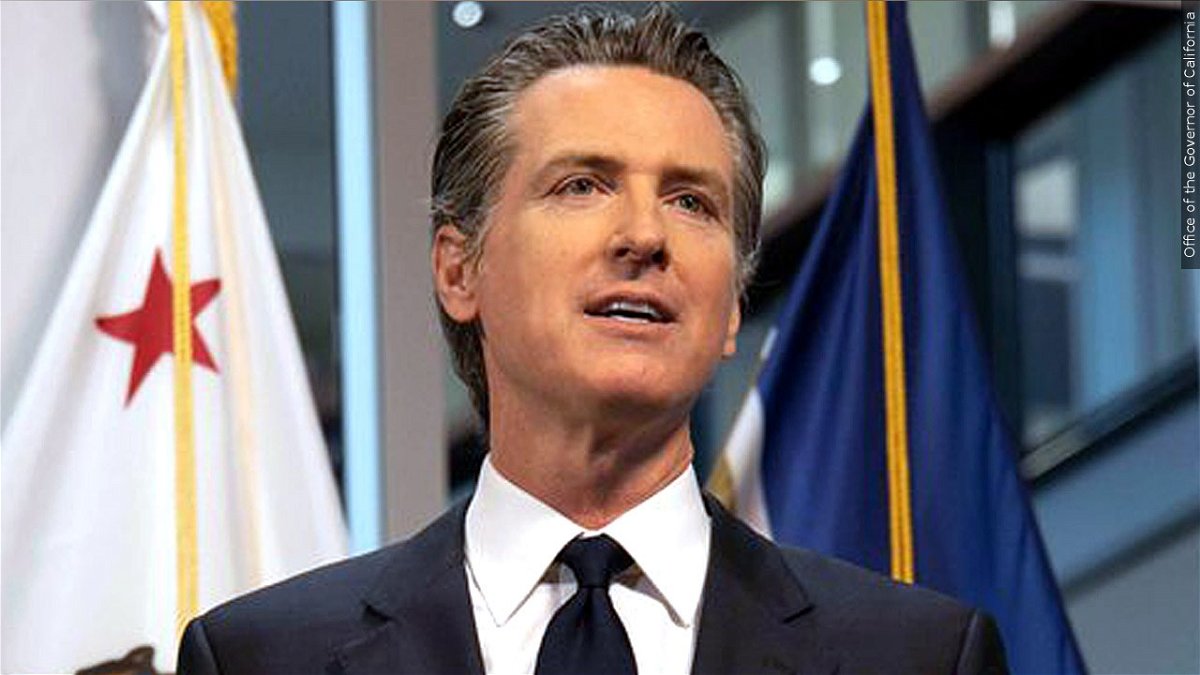California governor wants reserves and cuts to fix nearly $38B deficit, mostly sparing schools

By ADAM BEAM
Associated Press
SACRAMENTO, Calif. (AP) — California’s budget deficit is not as bad as previously thought, Gov. Gavin Newsom announced Wednesday, but it’s deep enough that it could delay a minimum wage increase for more than 400,000 health care workers and force spending cuts across various housing and climate programs.
Most of Newsom’s time in office has been defined by big spending increases made possible by unprecedented budget surpluses. But the past two years have saddled him with a pair of multi-billion dollar deficits, a less-welcome position for a governor seen as a potential Democratic presidential candidate.
Newsom vowed not to roll back his previous major spending commitments — including free kindergarten for all 4-year-olds and free health insurance for all low-income adults regardless of their immigration status. But he wants the Legislature to consider delaying a planned minimum wage increase for health care workers in years when there isn’t enough money in the budget to pay for it — something Newsom said lawmakers agreed to in advance before he signed the law last year.
Newsom stopped short of calling California’s budget deficit a “crisis.” But his plan to cover the deficit includes pulling more than $13 billion from the state’s reserves — an action that will require him to declare a “fiscal emergency.” His plan includes $8.5 billion in spending cuts, with about half of those cuts spread across various housing and climate programs.
The rest of the deficit comes from a combination of delays, deferrals, borrowing and shifting expenses to other funds.
The nonpartisan Legislative Analyst’s Office predicted last month that California’s budget deficit would be $68 billion — a staggering number that would have been a record-high shortfall for a state known for its progressive tax structure that makes it prone to wild swings in revenue. But Newsom said the deficit is actually $37.9 billion — a shortfall that, while still steep, is much easier to manage for a state with revenues expected to exceed $291 billion.
“We are just a little less pessimistic than they are about the next year,” Newsom said about the differing numbers.
Legislative Analyst Gabriel Petek said he thought Newsom’s estimates were reasonable but added, “They fall on the optimistic side of what we consider most plausible.”
Newsom signed a law last year to gradually raise the minimum wage for health care workers to $25 per hour. The first increase was set to take effect this summer. Newsom said he did not expect a big fight to potentially delay that increase, noting that “all parties” had committed to it prior to Newsom signing the law.
David Huerta, president of the Service Employees International Union California — the union that represents health care workers who would benefit from the minimum wage increase — said in a statement that the union applauded Newsom’s budget proposal and “looks forward to working with the Administration and the Legislature to ensure that these critically needed workforce investments are implemented.”
California’s economy is so big that if it were a country, it would be the fifth largest in the world. But the state’s budget is notoriously volatile. Just 1% of California’s total tax returns — about 180,000 — accounted for half of the state’s income tax revenue in 2021. Those rich people had insanely good years after the pandemic, earning $349 billion in capital gains income that resulted in $36 billion in taxes for the state.
By 2022, taxes from capital gains had declined to $15 billion. Overall, state tax collections are $42.9 billion below projections.
Newsom says this revenue decline does not mean the state is entering a recession. Instead, he said it is a return to normal following the pandemic, when consumer spending soared and generated billions of dollars of unexpected revenue for the state.
“This is a story of correction, a story of normalization after a period of a tremendous amount of distortion,” Newsom said.
Newsom wants to spend $126.8 billion on public schools — about $2.4 billion less than last year. But the cut could have been far worse. A voter-approved law guarantees the state will spend a certain amount on public schools each year. Because of the state’s revenue declines, Newsom said that guarantee has fallen by more than $11 billion over the past three years.
But instead of cutting the public education budget by that much, Newsom is using money from a special savings account for public schools that voters approved in 2014 to make up the difference.
“There are no deferrals, there are no claw backs of money school districts have already gotten, and not a single cut to ongoing permanent programs,” said Kevin Gordon, a veteran lobbyist who represents public school districts. “It just validates the governor’s huge commitment to public education. There’s a lot of grateful school districts out there today.”
State Sen. Roger Niello, a Republican representing Fair Oaks and vice-chair of the Senate budget committee, said he is concerned about the amount of spending Newsom wants to delay rather than looking for more places to make cuts. Newsom proposed to delay, but not cancel, $5.1 billion in spending for a variety of programs including facilities for preschool and public transit.
“A real risk of not developing a sustainable spending plan is that the budget makes commitments that maybe it can’t follow up on if we do have severe continued deficits,” he said.
___
Associated Press reporter Sophie Austin contributed to this report.



